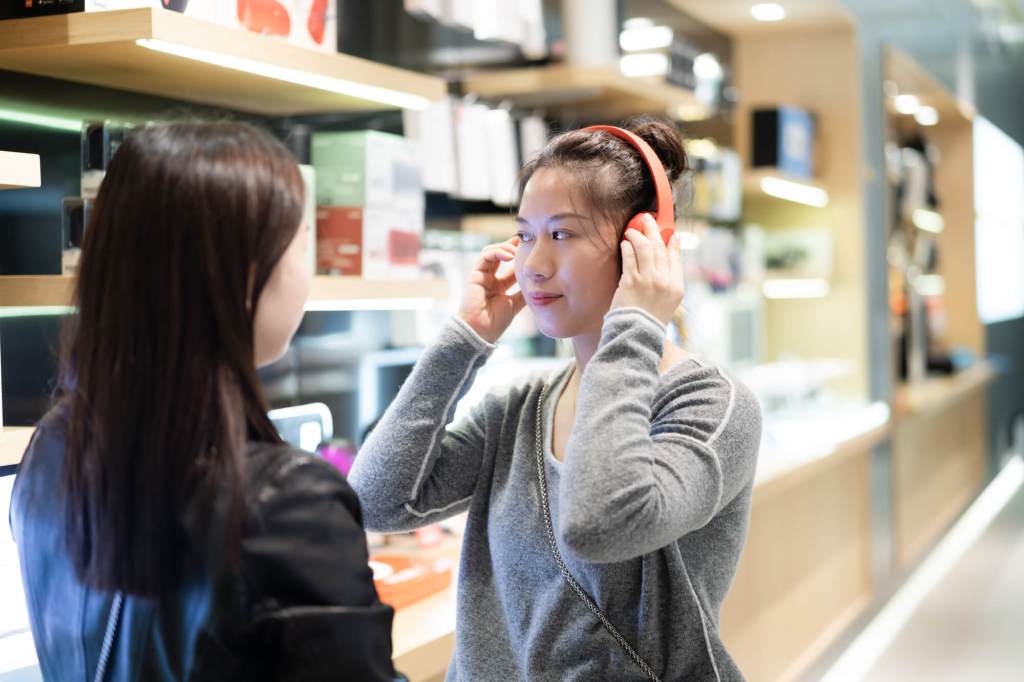The key to high frequency retail personalization success is providing customers with the right offers at the right time – through the right channel. In this post, we’ll explain the logic and algorithms behind the offer optimization process.

Personalized promotions are becoming a strategic marketing tool for high frequency retailers. It allows them to grasp essential objectives like reducing churn, leading customers up the loyalty ladder while increasing store visit frequency and basket size.
What makes the high frequency retailer different from other retail business is that the “right time” actually translates to “recurrent time.” In the sense that the grocery retailer, enjoying an average visit frequency of every week, will be looking to approach his customer on a weekly basis with a set of offers that matches their needs, encouraging them to purchase products that fit their needs and rewarding them for being loyal customer. Drugstores and specialty retailers will do the same on bi-weekly or monthly visits depending on their typical visit frequency.
Therefore, personalization for high frequency retailers, properly done, requires selecting an optimal set of offers for each customer recurrently, every week or in another frequency corresponding to their typical visit frequency (And that’s in addition to the need to run occasional campaigns in special events and on need basis).
So, how do you select the best offers for each of your hundreds of thousands, or even millions of customers, recurrently, week after week?
We are about to give marketers a peek into this logic, explain the fundamental difference between occasional campaigns and recurring campaigns and then explain the wizardry that goes into a successful recurring personalized campaign.
Campaign
The campaign is the framework that unites a set of offers with the goal of engaging a customer at a given time and certain channels. It can include more than one offer or channel.
As will be further explained below, usually the purpose of the occasional campaign is to serve a specific single marketing objective. While the purpose of recurring campaigns is to serve multi-marketing objectives.
Single objective, occasional campaign
The single objective campaign has one offer with one objective assigned to it. For example, the objective of the campaign may be to increase the sales of a specific product or reduce churn for customers with high churn propensity.
For this type of campaign, the goal of the personalization algorithms is to identify the customers who are most likely to respond to the campaign and reach the objective. If it’s a campaign aiming to increase sales of a product, the predictive algorithm should find customers who did not buy this product in the past, but have high likelihood to buy it when presented with the offer. To reduce churn, however, the goal is to find customers with high churn propensity that are likely to respond to a retention package. Obviously only part of your customers will get the offer, but that is fine since the intention is to target the relevant customers only.
Multi-objective, recurring campaigns
For multi-objective, recurring campaign, the intention is that each customer will get the optimal set of offers that matches his/her needs. Moreover, the intention is that the allocation of the offers to customers should be done in a way that serves multiple business objectives, such as cross-sell, upsell and retention.
The need for each and every customer to get highly relevant offers on weekly/bi-weekly/monthly basis, combined with the need for the retailer would like to achieve multiple objective, necessitates the definition of a bank of offers. The bank of offers should be, therefore, broad (dozens of offers) in the sense that each of the campaign objectives should be sufficiently covered.
For example, if one of the campaign objective is cross-sell, then there should be enough cross-sell offers that would ensure that every customer will get at least one cross-offer that is a highly relevant product that he/she does not currently buy. The offer selection process demands rigorous analytics to help the marketing person make the right selection. Stay tuned for that info in another blog post.
In sum, the personalization logic for multi-objective campaigns is the opposite of the logic of a single objective campaign. For a single objective campaign, the personalization logic identifies customers out of the entire customer base with the best fit for the offer. For multi-objective, recurring campaigns, the purpose of the personalization algorithm is to identify an optimal set of offers out of the entire offers bank with the best fit for each customer.
How multi-objective campaigns works
The information on each multi-objective campaign should, therefore, include the bank of offers, the ranking of the different campaign objectives, as well as the minimum and maximum number of offers that each customer can get. Campaigns should also include information such as timing, offer repetition policy, and relevant communication channels.
Now let’s open the box and demystify the magic of the personalization logic. In general, the personalization logic is the following two-phase process.
1.Giving each customer the most relevant offers
The best way to illustrate the workings of this rigorous step is to think about a logic that measures the relevancy of each offer of the offers bank for each customer, based on the offer objective and the customer profile. For example, if the offer objective is to cross-sell a specific product, the logic calculates the likelihood to accept the offer for each customer who is not buying this product, based on the similarity of that customer to other customers who are buying this product regularly.
The output of that step is that every customer is assigned a subset of offers that are most likely to be accepted. If the campaign includes, say, 80 offers, at the conclusion of this phase every customer may end up with 10-20 different offers that are relevant for him or her.
Now, let’s say the campaign is about sending the best four-offers set to every customer. That means that after this phase, we still remained with a challenge to select for each customer the best four offers out of the different 10-20 offers that has been identified as relevant for him/her.
2.Selecting the optimal set of offers
In the previous step, we selected the group of relevant offers for each customer. Now, we select the optimal set of offers that customers are most likely to respond to. The goal of this optimization phase is then to select the best offers (four in the example above) that are most likely to maximize the economic benefit from this campaign. Yes, it’s all about optimizing the offer relevancy to customer and at the same time achieving the business objectives of the campaign.
The optimization phase is an imperative and computationally complex process. It’s responsible for balancing many variables like the economic benefit of the offers, the predicted likelihood to accept of the offers and past offer acceptance patterns.
As if that wasn’t enough, the optimization algorithm must also take constraints into account. For example, it must restrict the minimum and maximum number of offers that can be sent (in total for customer and per offer), offer repetition over time, as well as restrictions on the number of offers from the same product category or for the same brand.
Conclusion
For high frequency retailers, matching customers with enticing offers recurrently that will achieve the different objectives that marketers want requires a dedicated and sophisticated personalization logic. This is where multi-objective personalization rules, using a smart, two-phase personalization process, each customer receives the optimal set of offers, those most likely to be accepted and at the same time achieve the campaign objectives recurrently, week after week.




